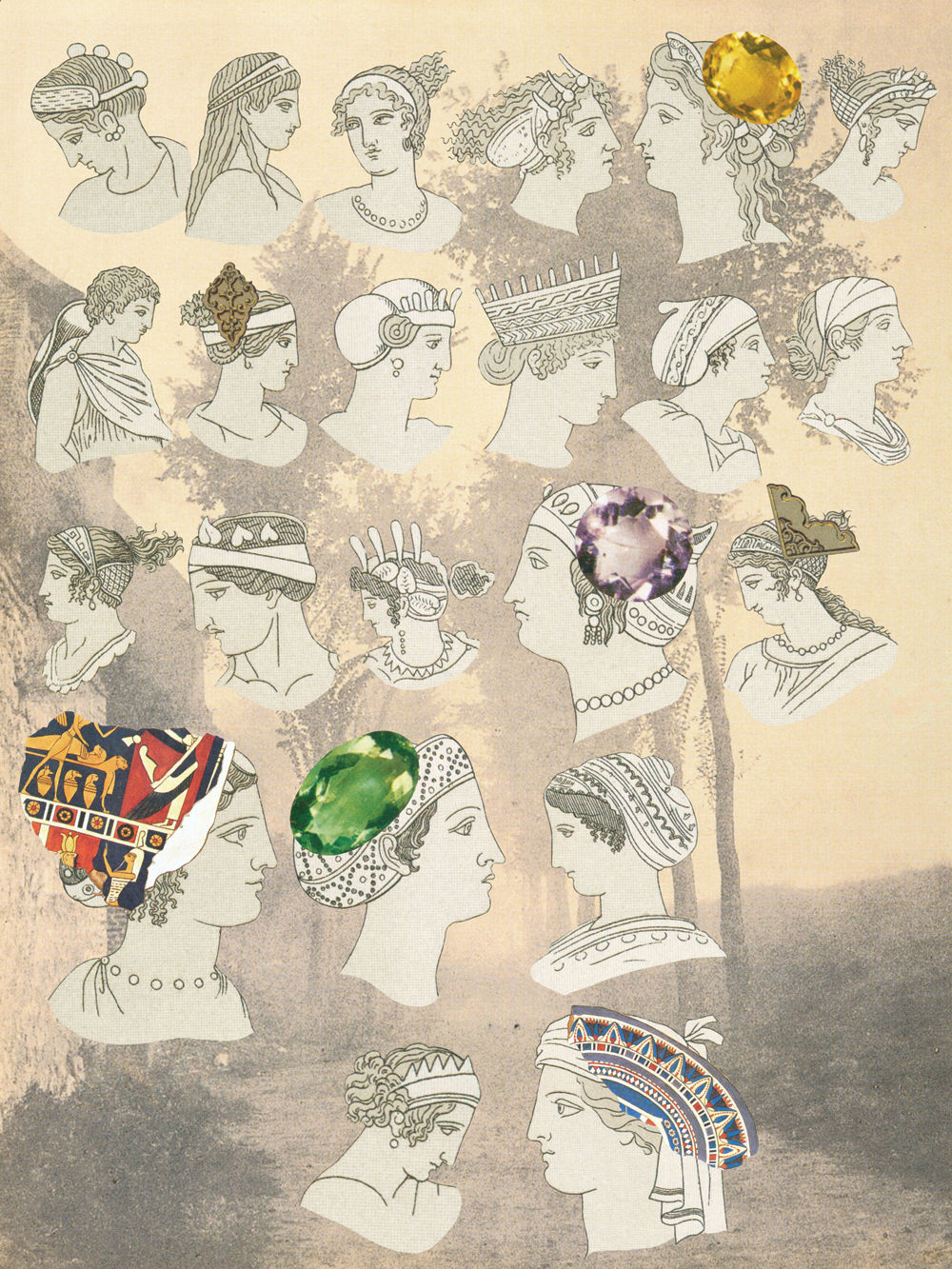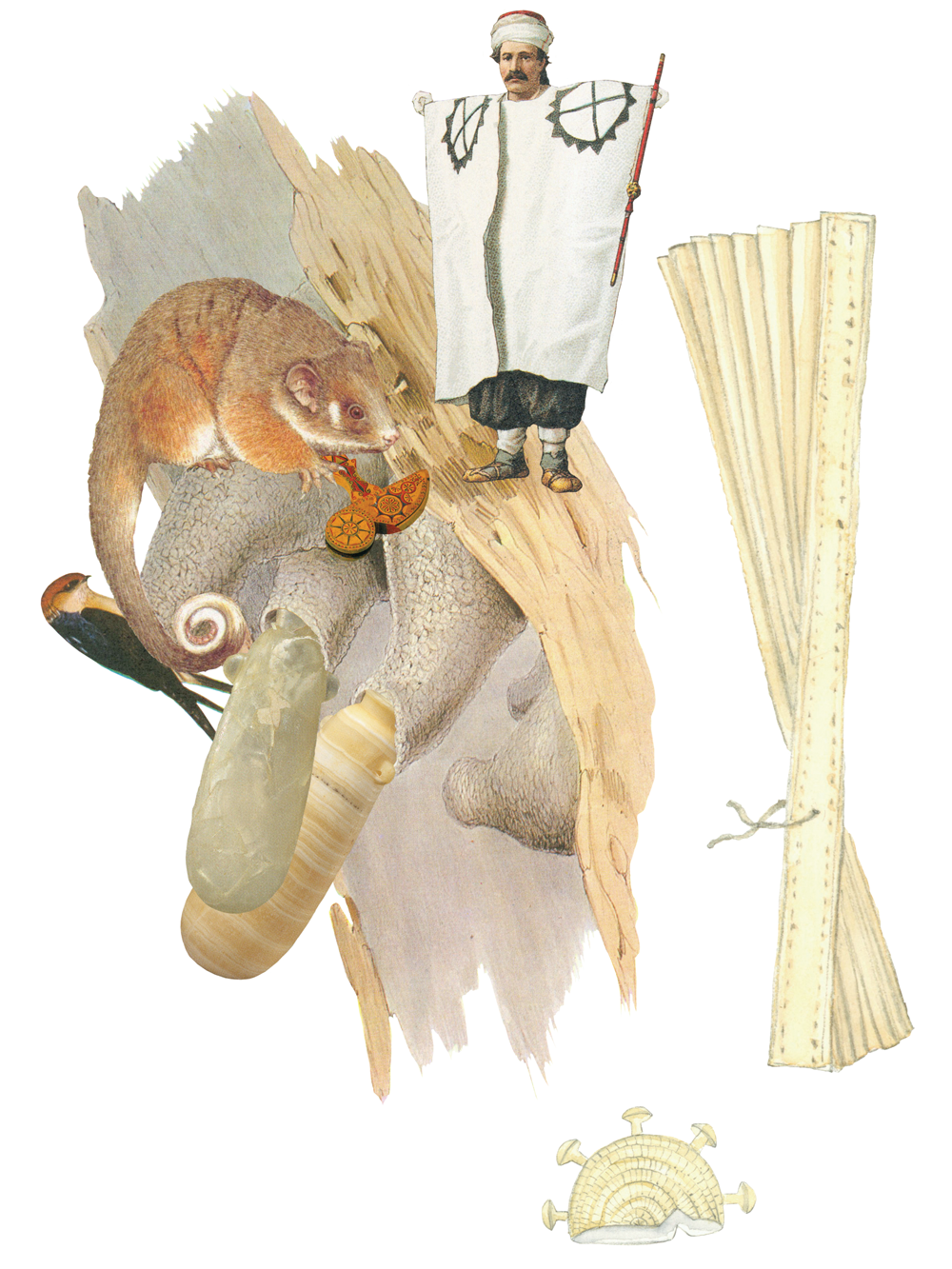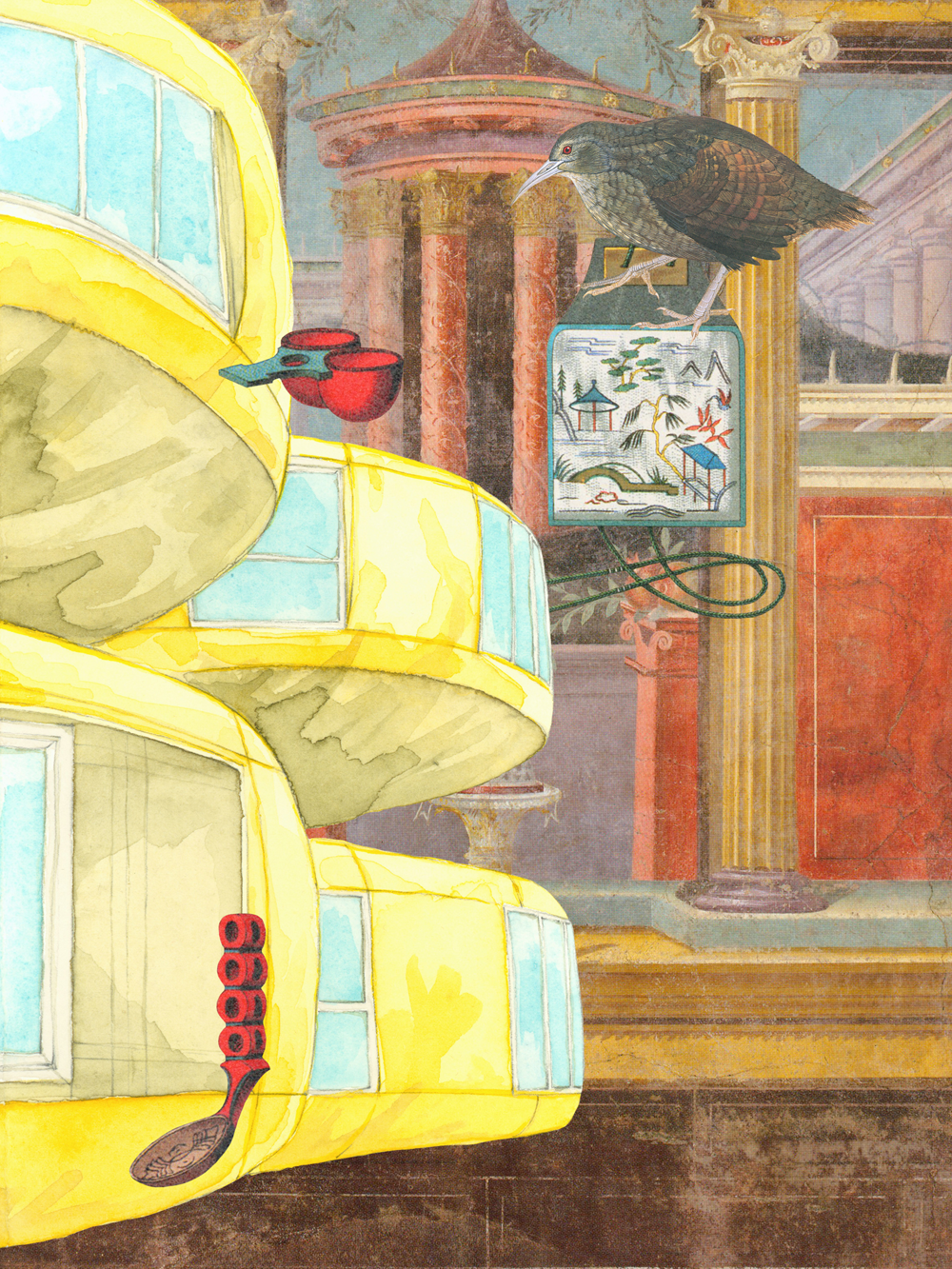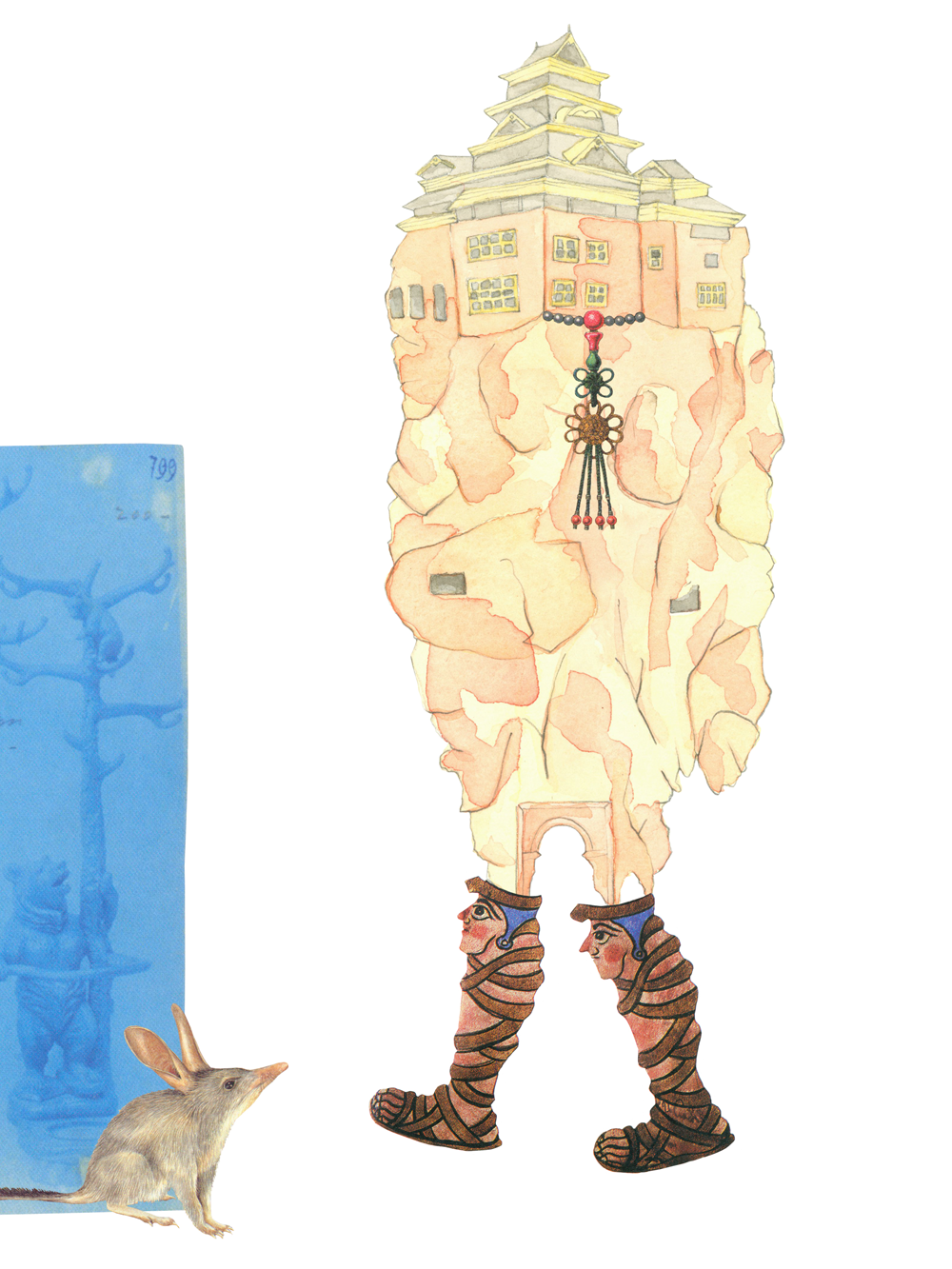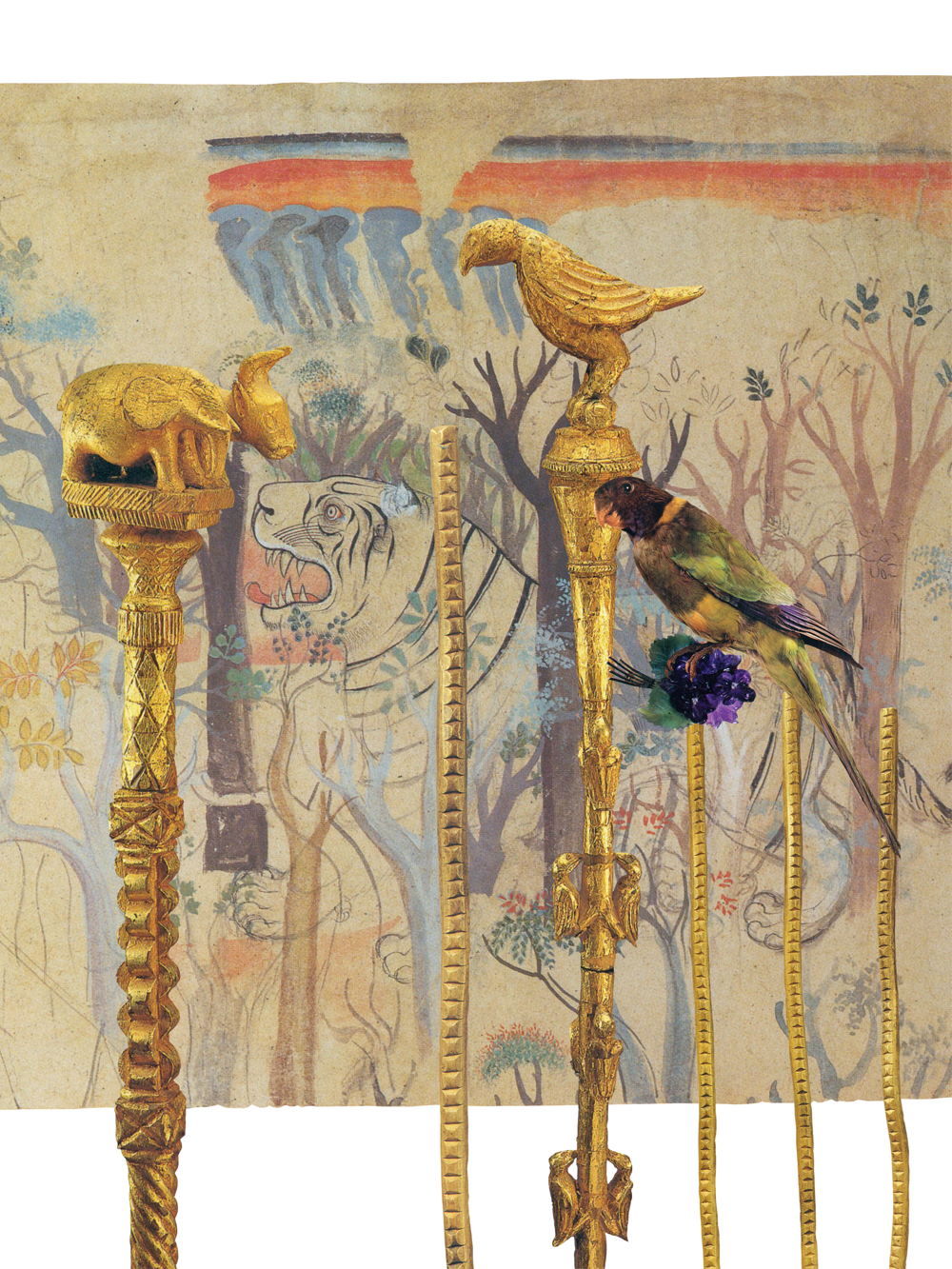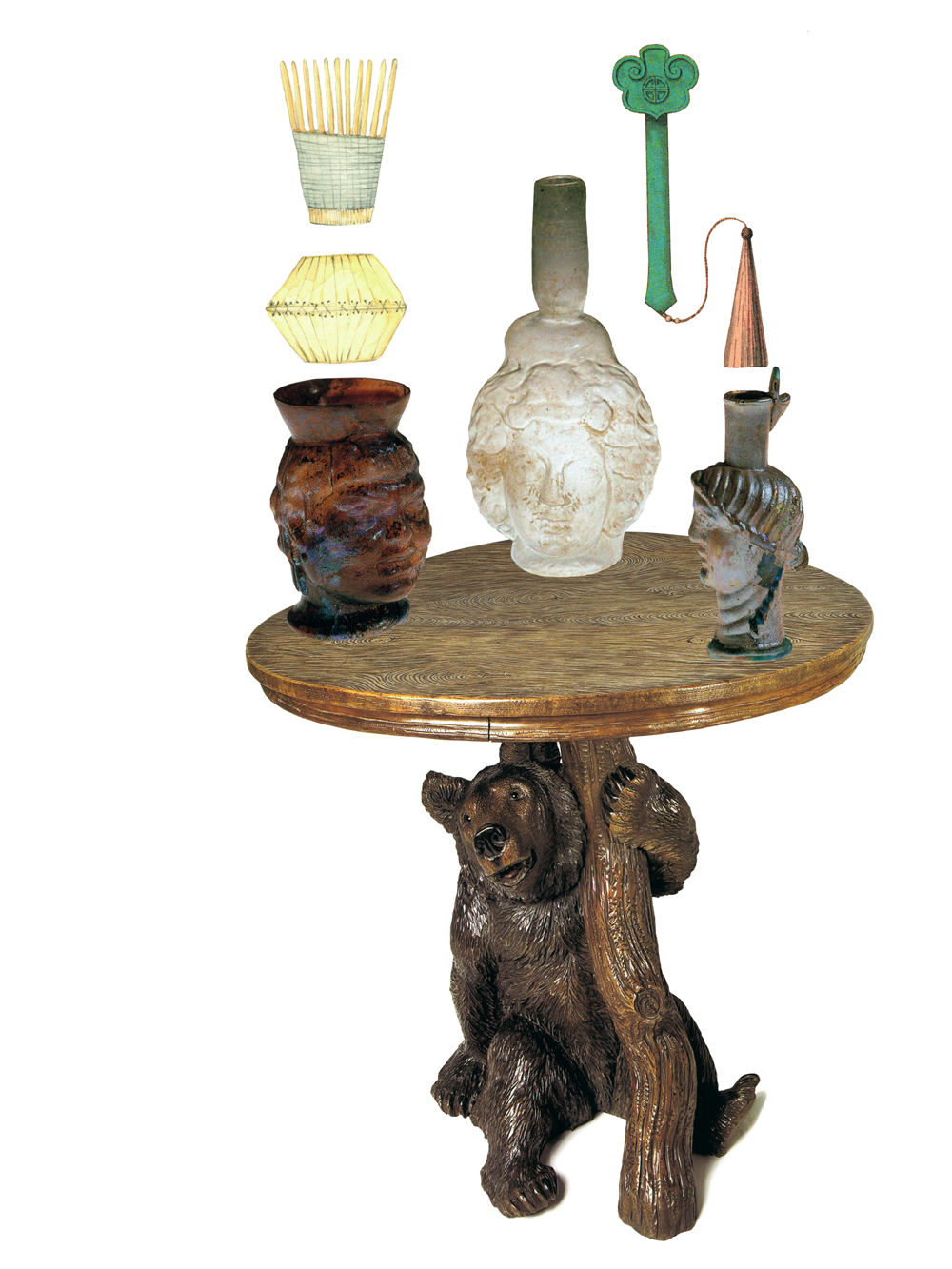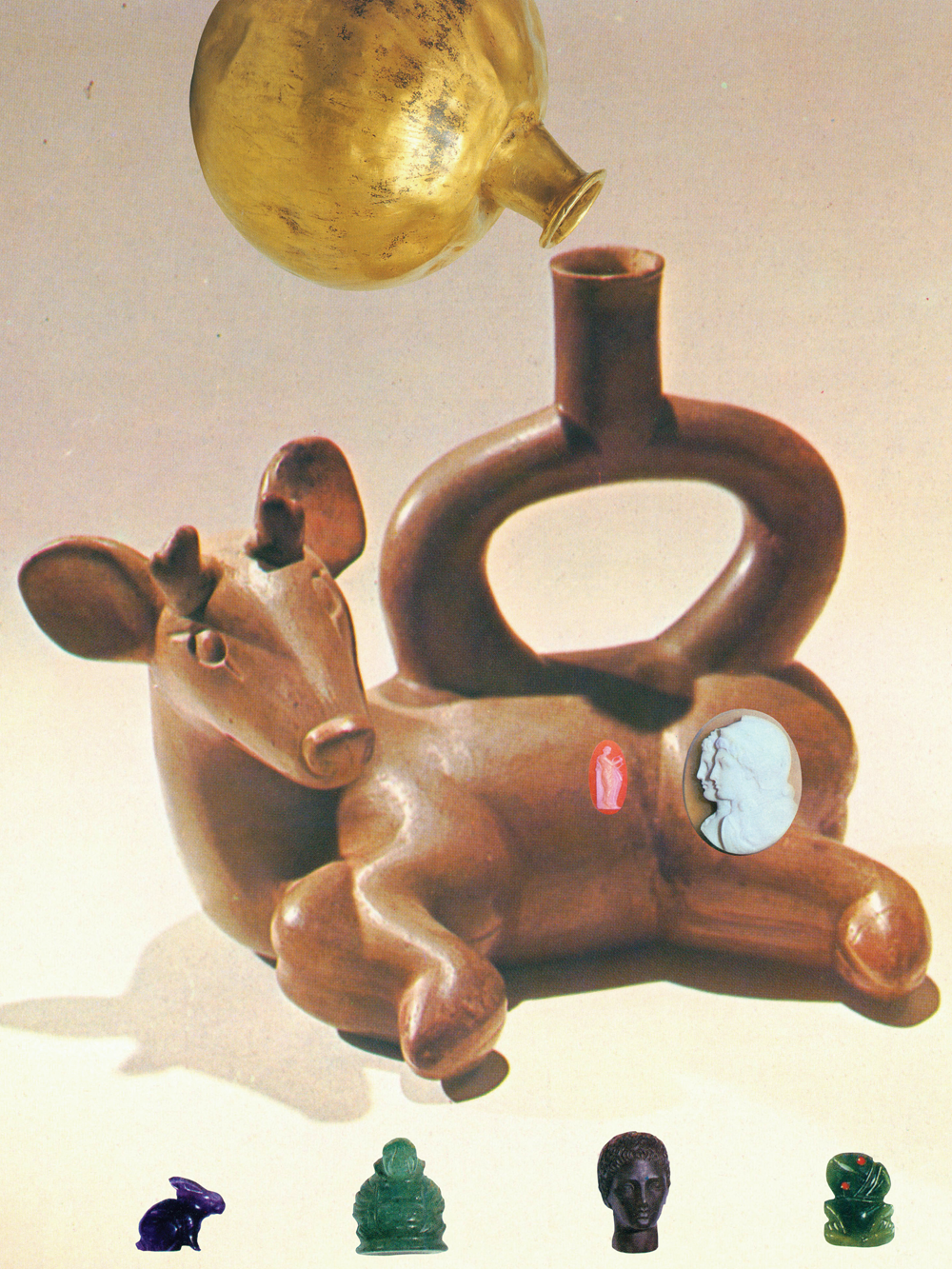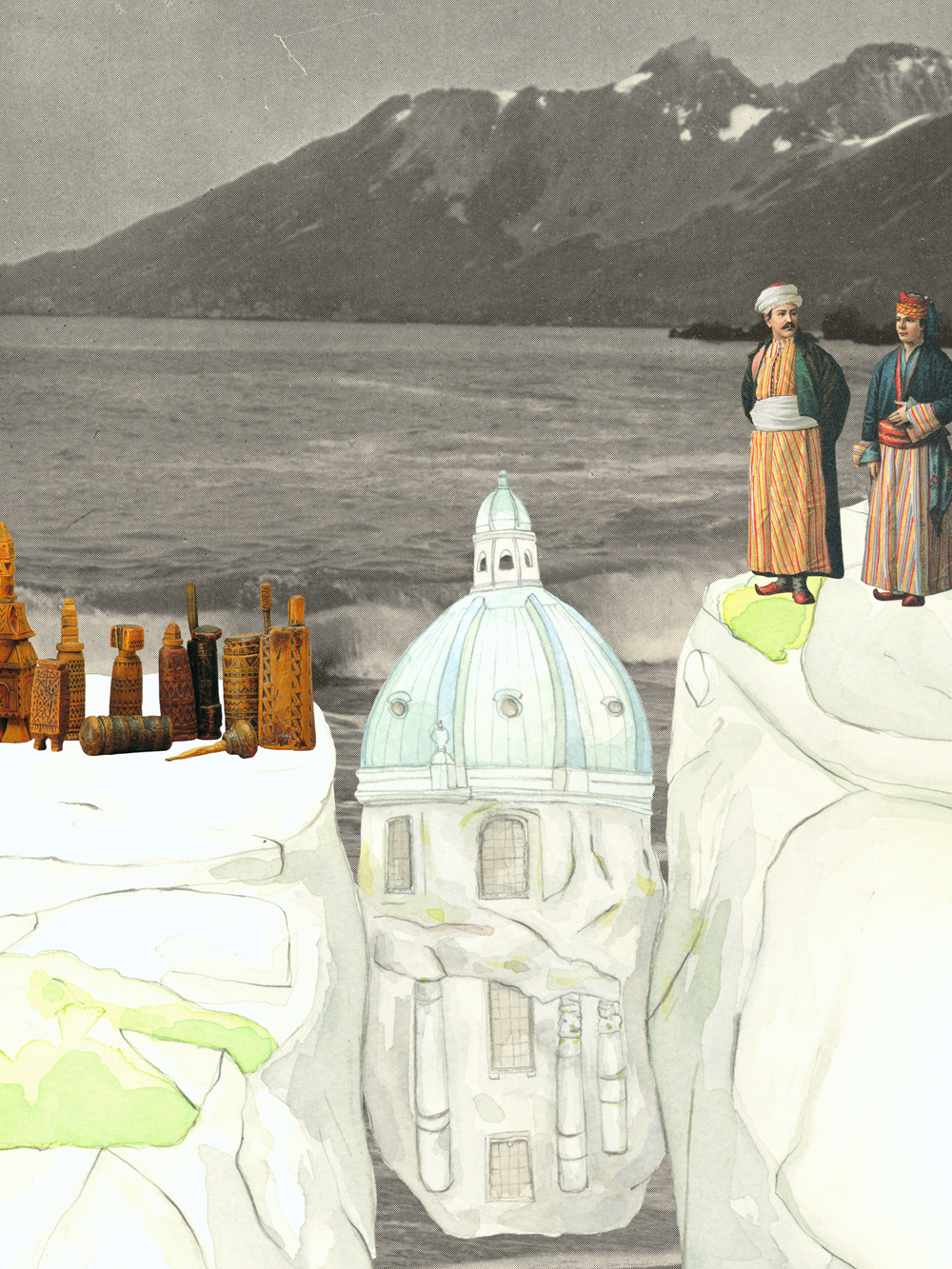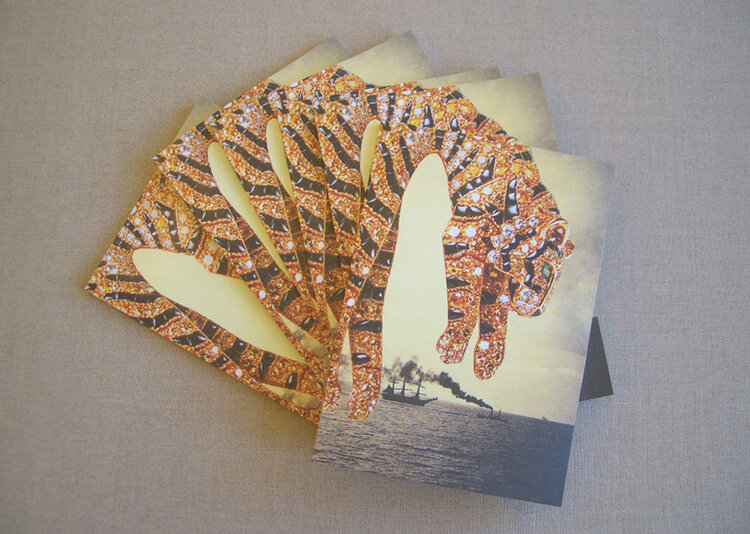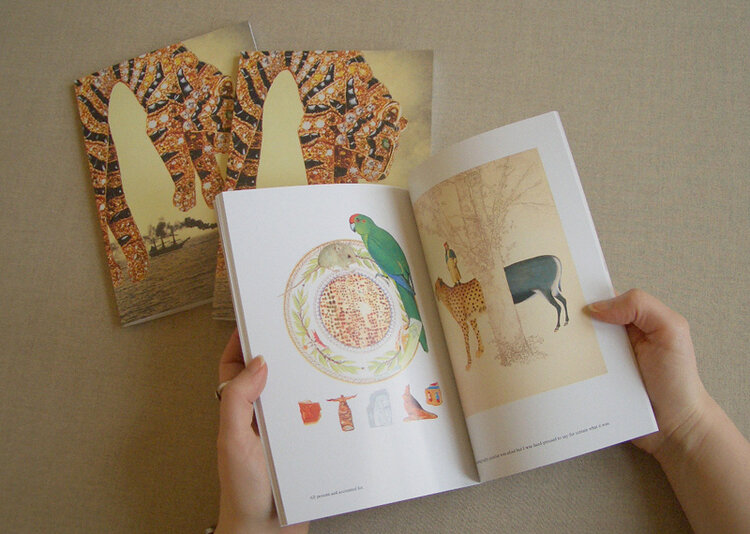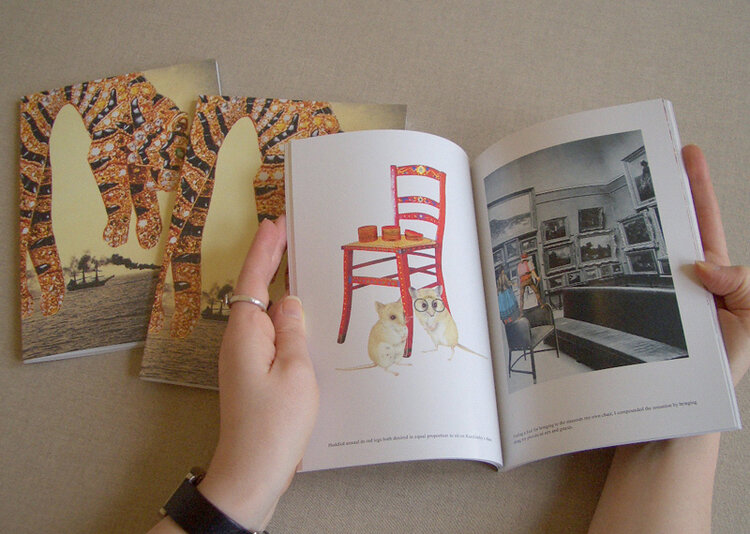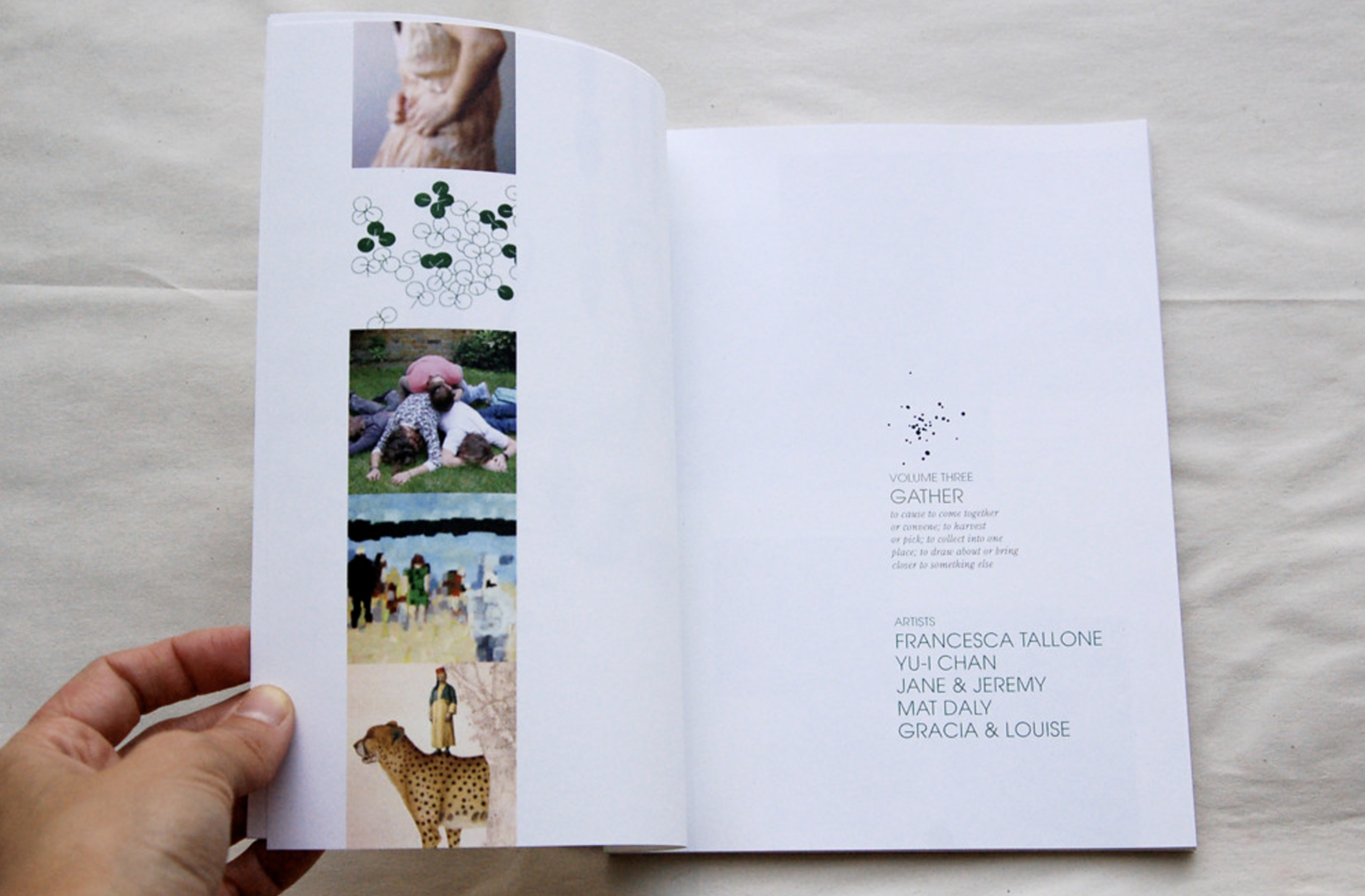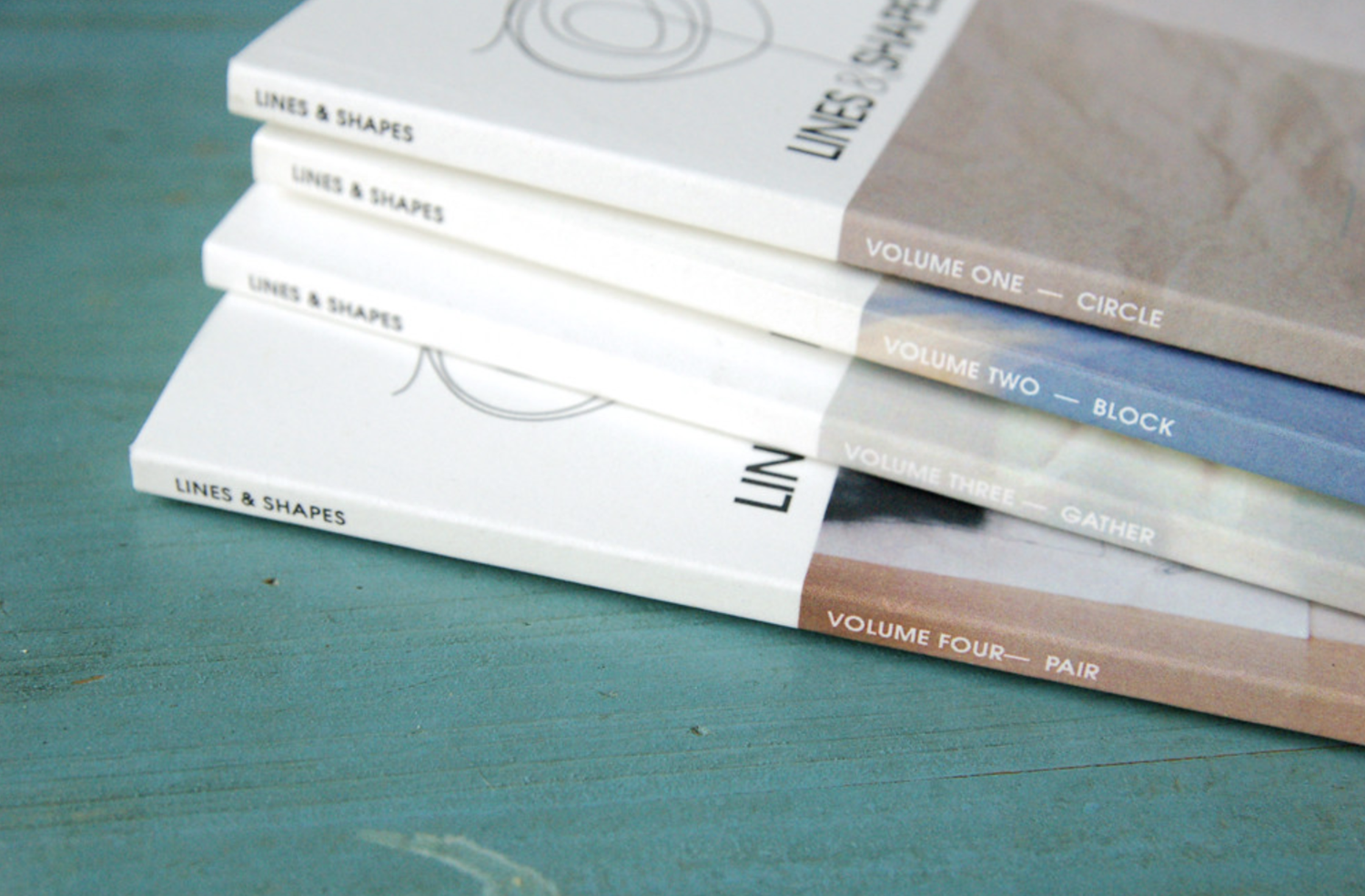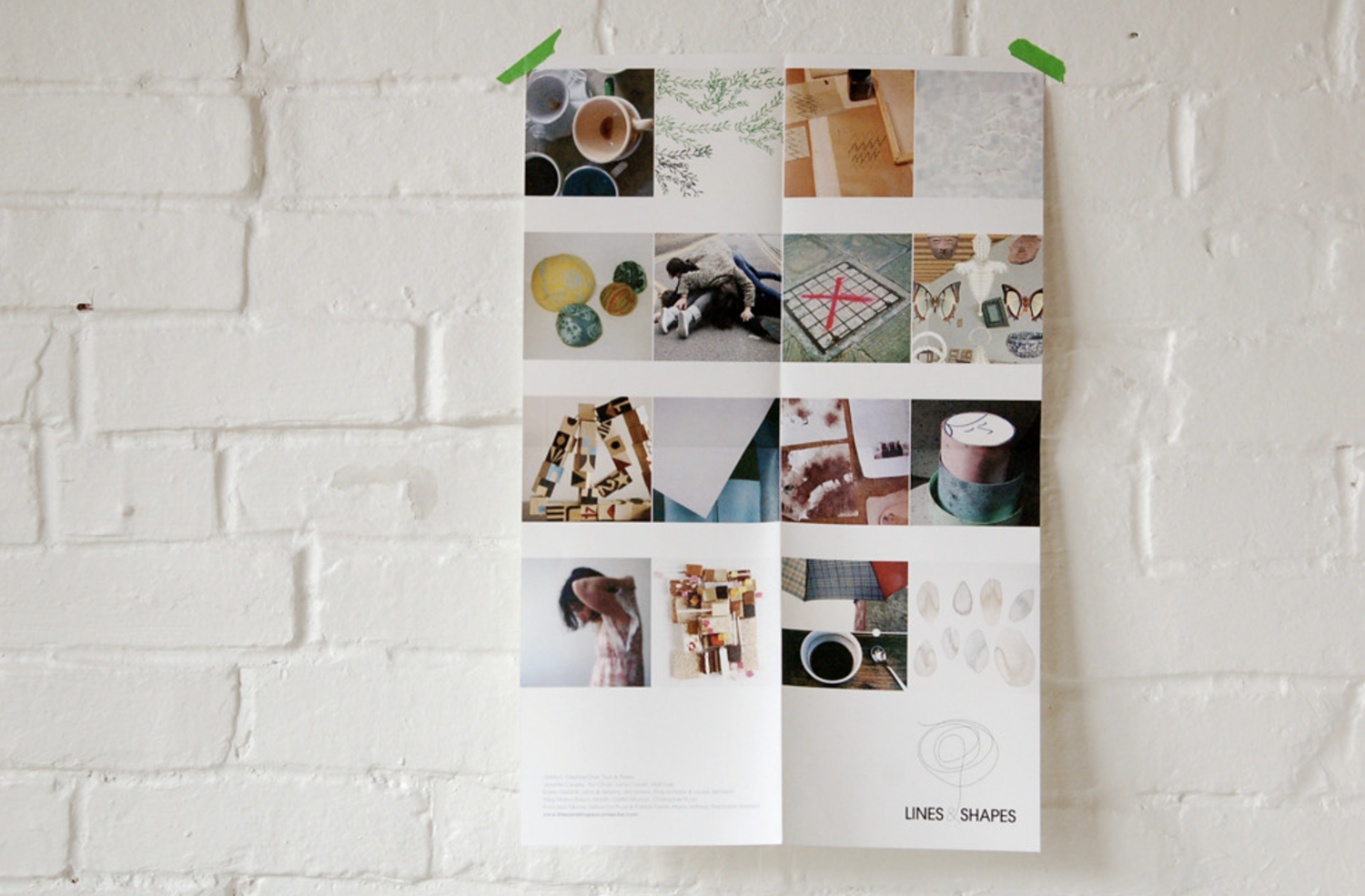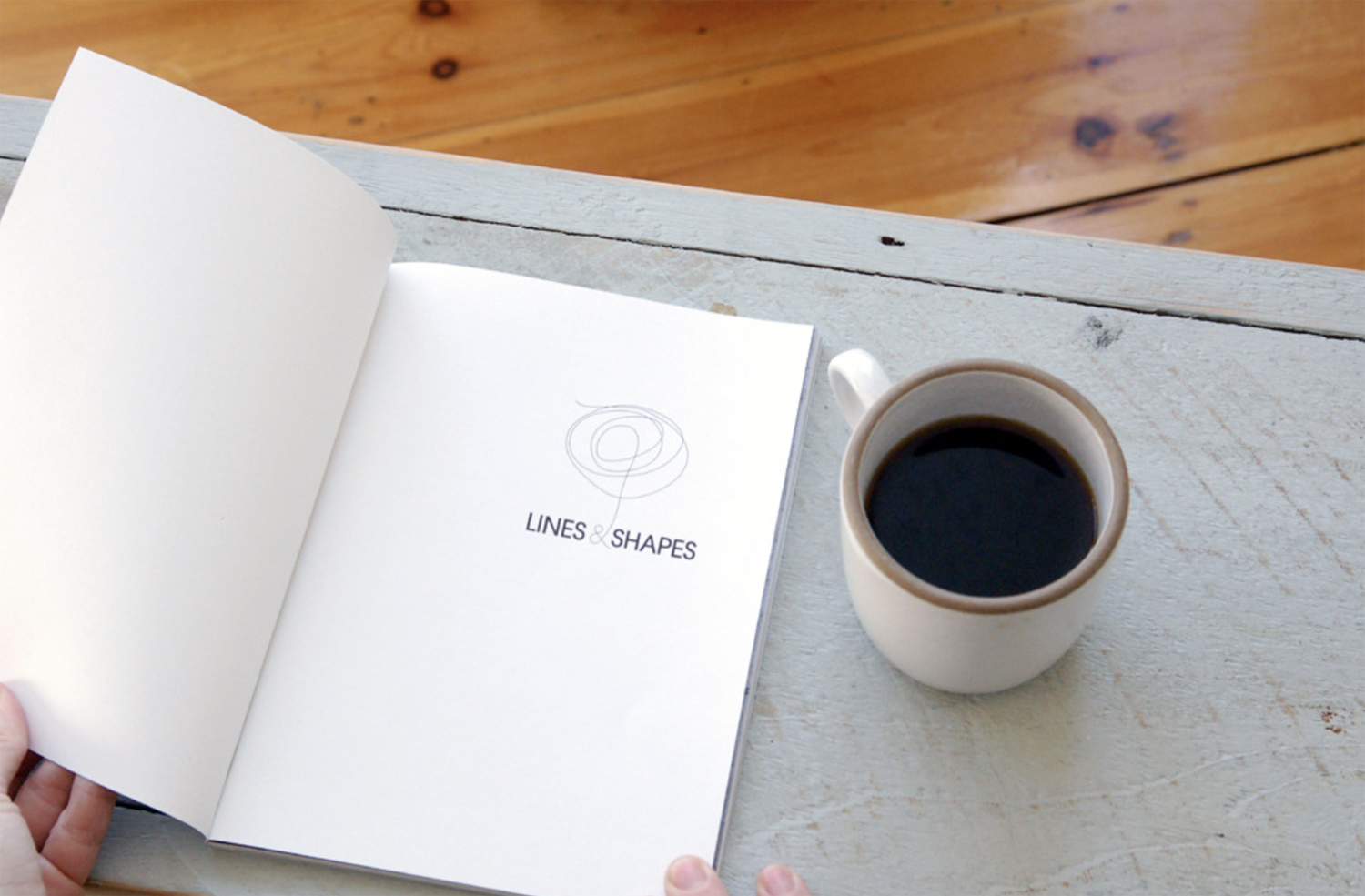AND WE STOOD ALONE IN THE SILENT NIGHT
“Gather: to cause to come together or convene; to harvest or pick; to collect into one place; to draw about or bring closer to something else”
(OED)
Gracia Haby & Louise Jennison
And we stood alone in the silent night
2008
50 page full colour digital print artists’ book, A5, perfect bound
Printed and bound by Documents on Call
Edition of 50
Exhibited as part of But for the moon nobody could see us (2008), editions of this artists’ book And we stood alone in the silent night are in the collections of the State Library Victoria and the State Library of Queensland.
This artists’ book features several of our collaborative works created especially for our part in Lines & Shapes, Volume 3, Gather (2008).
Lines & Shapes
A Lines & Shapes publication by Maria Alexandra Vettese & Lena Corwin
2008
Volume Three
Gather
Francesca Tallone
Yu-i Chan
Jane & Jeremy
Mat Day
Gracia Haby & Louise Jennison
We feature in the third volume of Lines & Shapes, a series of books curated by Maria Alexandra Vettese (MAV, Maine, USA) and Lena Corwin (Lena Corwin, New York, USA).
Each volume of Lines & Shapes has a different visual “jumping off point”. Artists work separately having no communication with each other, to interpret the visual idea,. Their creations are then designed into book form. No two volumes will be alike or include the same artists.
Lines & Shapes
﹏
RELATED POSTS,
FIND YOUR PLACE
HELPFUL EXTRAS
PORPOISE, SEA OTTERS AND LONG-NOSED ECHIDNAS
A FEW MORE GLIMPSES THROUGH THE TRAPDOOR
A TRAPDOOR HAS OPENED
IMPS ARE ABOVE THE GREVILLE ST BOOKSTORE
WITH A TRUSTY DONKEY BY MY SIDE
FOR THE BOOKWORMS
SEEN TODAY (TAKE II)
SEEN TODAY (TAKE III)
LATELY
MERRY THINGS FROM LINES & SHAPES
V3, POSTCARDS AND THE MOON
IN FINE PRINTED FORM
COMPOSED BY MOONLIGHT, SIX THINGS I LIKED TODAY
BLUE SKY OUTSIDE, LIGHT ROSE INSIDE
GREEN MONDAY
THANK-YOU
POINTING MY FEET IN THE DIRECTION OF HOME
WHY CAN'T I BE A LITTLE MORE LIKE THEM?
Reading Montages: perceptions, dilemmas, edges and resolution
Australian Library of Art
State Library of Queensland
Christene Drewe
27th of May, 2016
Siganto Foundation Research Fellow Victoria Cooper continues her research of the artists’ book & zine collections of the Australian Library of Art. Her passion for montage is evident in her lectures and writing. There is however a question which inevitably arises — what is the difference between montage and collage?
….
Responding to terminology dilemma:
As I progress through the research I am continually confronted with terminology issues and questions regarding the nature of montage and its intersection with collage. The dilemma is with me as a kind of Sisyphean cycle where, after climbing the mountain of wondrous diversity in the Australian Library of Art artists’ book collection; I am drawn back down by the weighty issues of inconsistent terminology.
Many artists, who cut, arrange and glue disparate and/or mixed media elements refer to their work as collage or for computer made images, digital collage. This should be the end of the debate as the etymology of collage is the French word ‘to glue’. But there are others who cut and piece together disparate elements and ‘glue’ and then fuse them within the image and refer to their process as montage (or digital montage for computer images). Also interesting to note is that the origin of the word montage is a French word meaning ‘to mount’. Is there a need to differentiate between these similar practices? Does terminology affect the ‘reading’ of these works? In my art practice I refer to myself as a montage maker, thinker and reader and as such I bring my own perspective to reading visual narratives.
Gracia Haby and Louise Jennison, who prefer to be known as paper artists, make collage works. Their unique state artists’ books and democratic multiples in the form of zines and editions of artists’ books have a place within this discussion.
Haby and Jennison responded to my email question regarding the nature of the digital work in their book, And we stood alone in the silent night, where they state that: “Digital collages are made in chorus with unique state pieces. They are all a means of making, with the ‘how’ of lesser interest to us than the ‘why’ or ‘message’.”
In their statement above they suggest that the means of the making is secondary to the final work. Even when the collage has been digitally scanned and then printed it remains, for them, a collage.
The book, And we stood alone in the silent night, presents the reader with an enchanted narrative through the composition of images and poetic texts across the pages. Underpinning the reading is the smooth and seamless joins of the elements creating a surreal landscape with a theatre of colourful inhabitants. The compositional elements draw the reader into a kind of Alice in Wonderland experience of reading: where the fused elements are arranged in a mise en page; and the turning page emulates the scenes of a paper movie (i). The small size text comes through the reading as a poetic aside to underscore the scene.
Haby and Jennison’s careful cutting and pasting of added elements over or alongside the original image distinguish their broader collage work. Again, in these works the silent edges between these interventions and the original image provide uninterrupted reading. Importantly as this transition or interval between the elements goes unnoticed the added element ultimately colonise the interior space and time of the original image.
….
So rather than questioning the terminology, whether a collage or montage, I will continue in my ‘montage readings’ informed by the narratives contained within and between grafted edges.
Victoria Cooper
(i) Lou Stoumen is the author of visual books including Can't Argue With Sunrise: A Paper Movie (1975)
